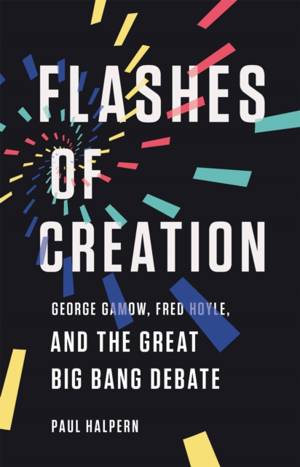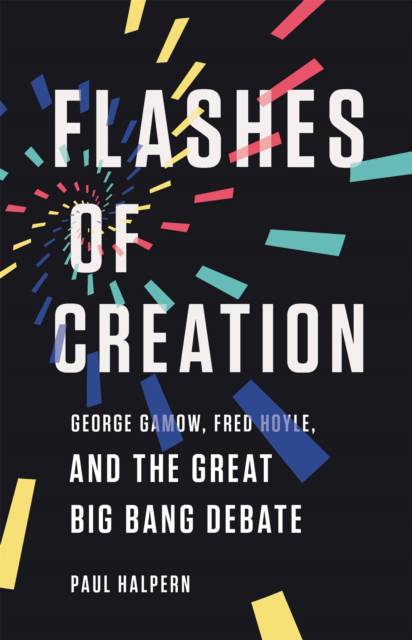
- Afhalen na 1 uur in een winkel met voorraad
- Gratis thuislevering in België vanaf € 30
- Ruim aanbod met 7 miljoen producten
- Afhalen na 1 uur in een winkel met voorraad
- Gratis thuislevering in België vanaf € 30
- Ruim aanbod met 7 miljoen producten
Zoeken
Flashes of Creation
George Gamow, Fred Hoyle, and the Great Big Bang Debate
Paul Halpern
Hardcover | Engels
€ 41,95
+ 83 punten
Omschrijving
A respected physics professor and author breaks down the great debate over the Big Bang and the continuing quest to understand the fate of the universe. Today, the Big Bang is so entrenched in our understanding of the cosmos that to doubt it would seem crazy. But as Paul Halpern shows in Flashes of Creation, just decades ago its mere mention caused sparks to fly. At the center of the debate were Russian American physicist George Gamow and British astrophysicist Fred Hoyle. Gamow insisted that a fiery explosion explained how the elements of the universe were created. Attacking the idea as half-baked, Hoyle countered that the universe was engaged in a never-ending process of creation. The battle was fierce. In the end, Gamow turned out to be right -- mostly -- and Hoyle, despite his many achievements, is remembered for giving the theory the silliest possible name: "The Big Bang." Halpern captures the brilliance of both thinkers and reminds us that even those proved wrong have much to teach us about boldness, imagination, and the universe itself.
Specificaties
Betrokkenen
- Auteur(s):
- Uitgeverij:
Inhoud
- Aantal bladzijden:
- 304
- Taal:
- Engels
Eigenschappen
- Productcode (EAN):
- 9781541673595
- Verschijningsdatum:
- 17/08/2021
- Uitvoering:
- Hardcover
- Formaat:
- Genaaid
- Afmetingen:
- 160 mm x 236 mm
- Gewicht:
- 498 g

Alleen bij Standaard Boekhandel
+ 83 punten op je klantenkaart van Standaard Boekhandel
Beoordelingen
We publiceren alleen reviews die voldoen aan de voorwaarden voor reviews. Bekijk onze voorwaarden voor reviews.











